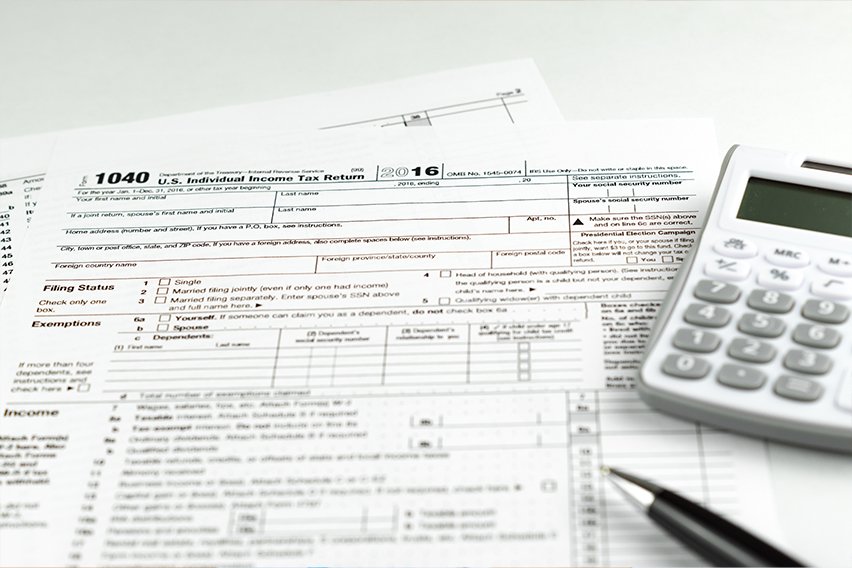What is the Difference Between Tax Inclusive vs Tax Exclusive?

There are two types of methods to apply tax on items. As a consumer, it can be confusing and time-consuming to understand if the cost of an item will increase when you go to checkout. For business owners, it’s essential to know the difference between tax-inclusive and exclusive costs so that you can instill a system that works best for your business.
Recognizing when you’re dealing with inclusive or exclusive rates will help you gain an understanding of commonly implemented tax strategies and help you navigate your expenses.
Key Takeaways
As a business owner, it’s important to understand the difference between exclusive and tax-inclusive rates to better handle your daily business affairs. Here’s what you need to know:
- A tax-exclusive rate means a price that does not have taxes included initially but is charged tax later on (e.g., price tags on retail goods).
- A tax-inclusive rate means a price that already has taxes factored into it (e.g., the price for a service charged by a merchant).
- There’s a difference between exclusive and inclusive rates, but remember that you’ll pay the tax either way.
Here’s What We’ll Cover:
Key Differences Between Tax Inclusive vs. Tax Exclusive
Understanding Tax Methods
There are 3 general forms of tax: taxes on what you earn, taxes on the assets you own, and taxes on the things you buy.
The tax implemented on a unit price is called sales tax. Sales tax is typically excluded from an initial cost, and you will generally see the tax amounts added to the total amount at the point of sale, this is an example of exclusive pricing.
Retail sales taxes are a significant source of state and local revenue, which is why the U.S. relies so heavily on collecting them. Most states collect a percentage of tax, and those sales tax rates significantly impact where consumers bring their business.
When considering a good or a service, depending on the selling price, a costly tax rate can be added to the purchase amount. As a consumer, knowing what you will be paying after the tax amount is added is helpful. As a business owner, deciding at what point you will implement the tax amounts is important.

What Is Tax Inclusive?
Tax Inclusive refers to the tax amount included in the purchase price. An example would be if a merchant wanted to charge $100.00 for a service and there is a 10% tax, they would offer that service for $110.00, tax included.
In some cases, inclusive prices are preferred when it comes to quick transactions, especially when cash methods are suggested. It’s much simpler for a merchant to prepare inclusive prices of their products and give a flat rate unit amount than to wait until the final transaction to know the grand total.
Stating that the sales tax is included in the selling price will help clients calculate the total amount and will assist in calculating a final invoice. Keep in mind that as the value of the product or service increases, the tax rate will also increase.
Key Elements of Tax Inclusion:
- Clients pay a flat rate for a product or service
- Calculations of tax rates are done prior to the transaction
- The unit price will be lower before tax percentage is applied
- Income tax rates are generally quoted as tax inclusive
What Is Tax Exclusive?
Tax exclusive means the tax is calculated at the point of the final transaction. A merchant may charge $100.00 for a service plus tax. If the tax amount is 10%, you will have to factor in an additional $10 at the point of purchase.
Exclusive rates may be favored by business owners that do not want to take tax into consideration when pricing their products or services. This method also provides a more detailed accounting of expenses when creating an invoice.
Keep in mind that consumers may want to have a clear indication that tax is not included so that they can expect the total amount to be higher at the point of purchase.
Key Elements of Tax Exclusion:
- Business owners do not need to factor in tax to their rates
- Tax is added at the point of the final translation
- Tax is isolated on receipt of the sale
- Sales tax is typically excluded from the initial rate
Key Differences Between Tax Inclusive vs. Tax Exclusive
Inclusive rates will always include tax in the total that you see in the unit price, whereas exclusive rates will be excluding the tax that will be added at the point of purchase.
Exclusive rates will always be lower than the inclusive rate, and the difference will increase as the amounts rise. Keep in mind that as the value of a product or service increases, the tax rate will also increase.
As a business owner, it’s helpful to understand the difference between exclusive and tax-inclusive rates. Knowing how to identify a flat rate and a rate subject to an additional tax amount will help you predict the total cost you will pay when considering goods and services.

Conclusion
By understanding these two simple yet important terms, you’ll be able to quickly assess the true unit price of a good or service. You’ll also be able to know how much of your total payment goes towards taxation, helping you plan your financials more effectively.
If you’re looking for an online tool to help manage payments and keep pre-tax value and after-tax income in mind, FreshBooks is here to help. FreshBooks Accounting Software can help business owners in managing their tax obligations related to Tax Inclusive and Tax Exclusive pricing. FreshBooks can assist:
- Set up tax rates
- Apply tax to invoices
- Generate tax reports
Click here to give FreshBooks Payments a try for free.
Did you find this article helpful? Head to our taxes category for additional information like this.
FAQs on Tax Inclusive vs. Tax Exclusive
More questions about the difference between inclusive and exclusive rates or tax-exclusive terms? Here are some frequently asked questions.
How do you calculate an inclusive price?
Looking to include a tax on a receipt? Simply divide the total amount of the items that are subjected tax by (1 + the applicable tax rate). For example, if your goods are subjected to a tax of 9%, you would divide the total by 1.09 to get your rate, which you would then add onto the original total for an inclusive rate.
What is tax-exclusive pricing?
Tax-exclusive means that tax is not included in the final total. This means you’ll need to know the tax and factor it in ahead of time, as the actual final price will be a bit higher than originally shown.
What does exclusive of all taxes mean?
Exclusive of all taxes (or a tax-exclusive tax rate) simply means that no taxes have been included in the price. This means that it may be subject to any number of additional taxes, depending on the specifics of the goods or services being rendered.
Is sales tax exclusive or inclusive?
Typically, sales tax is exclusive. The only exception is in rare cases where a store will mark retail goods as ‘tax included’, though this is uncommon. You’ll usually need to be prepared to pay a few extra dollars at the till for almost any retail good.
What do inclusive tax and gratuity mean?
This simply means that tax and gratuity fees are already factored into the price you have received for a good or service. This means the number displayed on the invoice or bill of sale includes the tax paid and will exactly match the actual price you end up paying.
What does VAT inclusive and exclusive mean?
As with the other types of exclusive and tax-inclusive rates, VAT inclusive simply means that the Value-Added Tax (VAT) is already included in the price. VAT exclusive, on the other hand, means that the VAT has not yet been included, and there will be tax paid on top of the pre-tax selling price.
About the author
Michelle Alexander is a CPA and implementation consultant for Artificial Intelligence-powered financial risk discovery technology. She has a Master's of Professional Accounting from the University of Saskatchewan, and has worked in external audit compliance and various finance roles for Government and Big 4. In her spare time you’ll find her traveling the world, shopping for antique jewelry, and painting watercolour floral arrangements.
RELATED ARTICLES


 How to Fill Out W-2 Form: Box-by-Box Walkthrough
How to Fill Out W-2 Form: Box-by-Box Walkthrough Self-Employment Tax: Definition and How to Calculate It
Self-Employment Tax: Definition and How to Calculate It What is a W3 Tax Form and How to File One
What is a W3 Tax Form and How to File One What is a W-4 Form?
What is a W-4 Form? How to Fill Out a W-4 Form: A Step-By-Step Guide (2024)
How to Fill Out a W-4 Form: A Step-By-Step Guide (2024) W2 vs W4: The Difference Between W2 and W4 IRS Forms
W2 vs W4: The Difference Between W2 and W4 IRS Forms